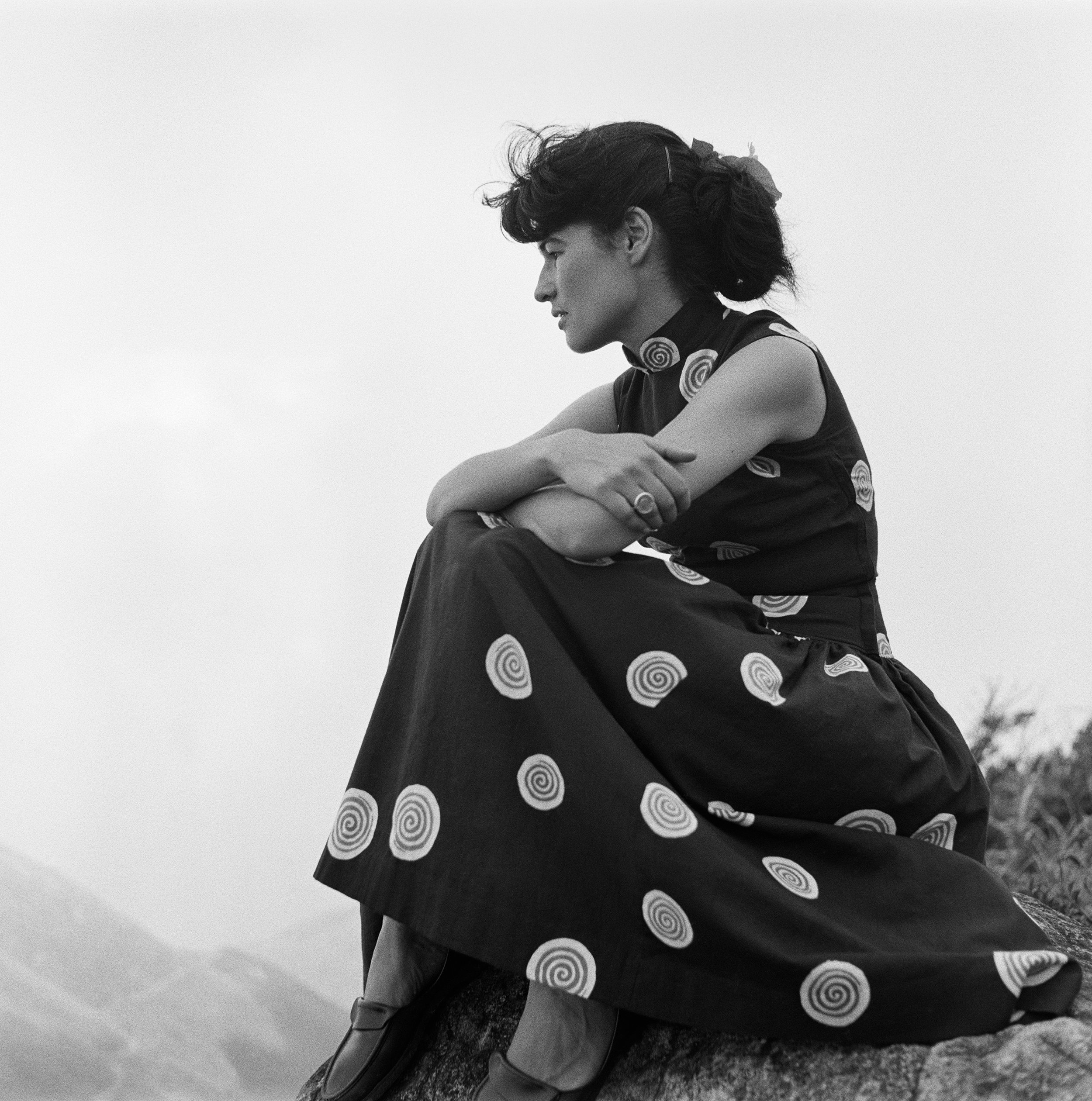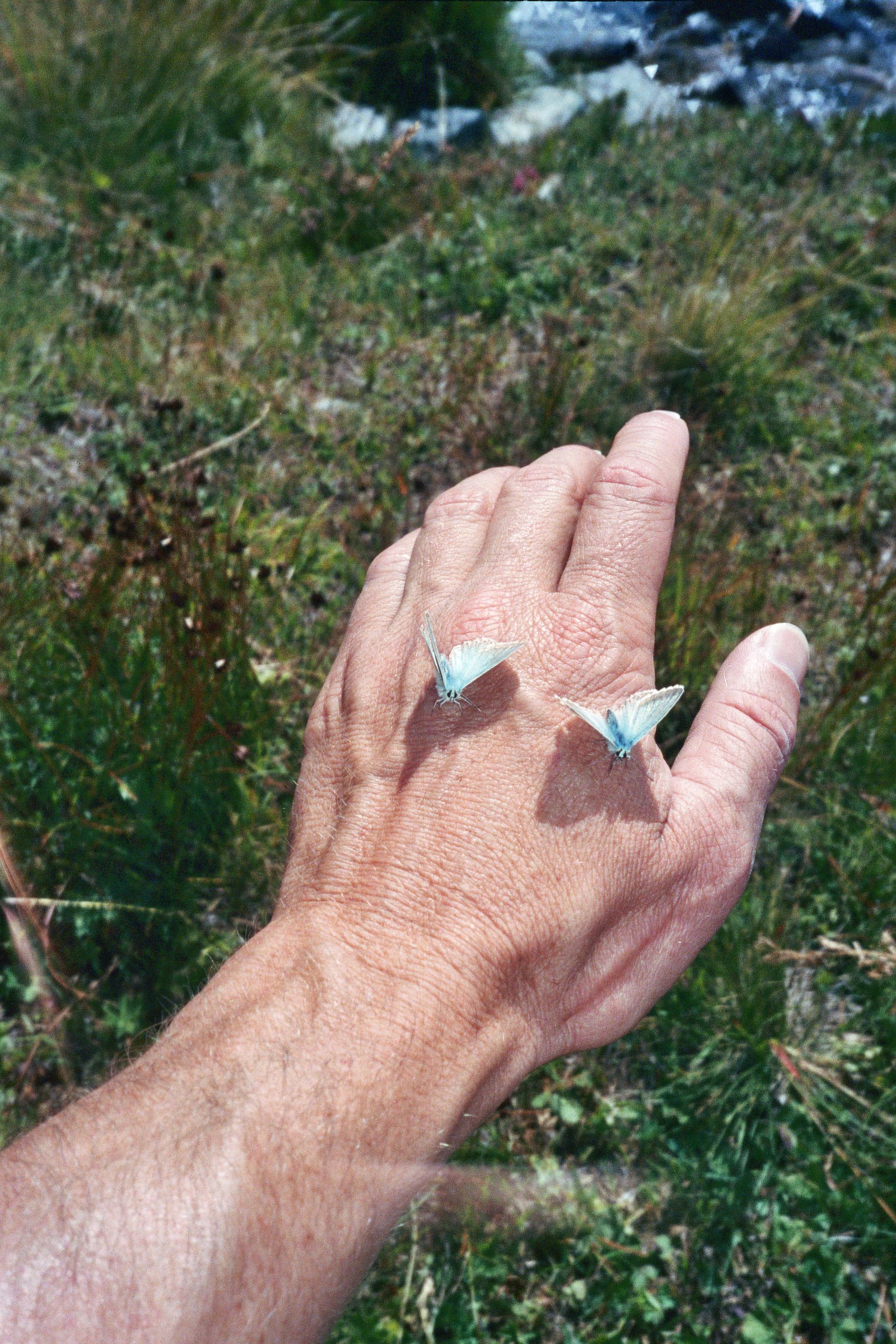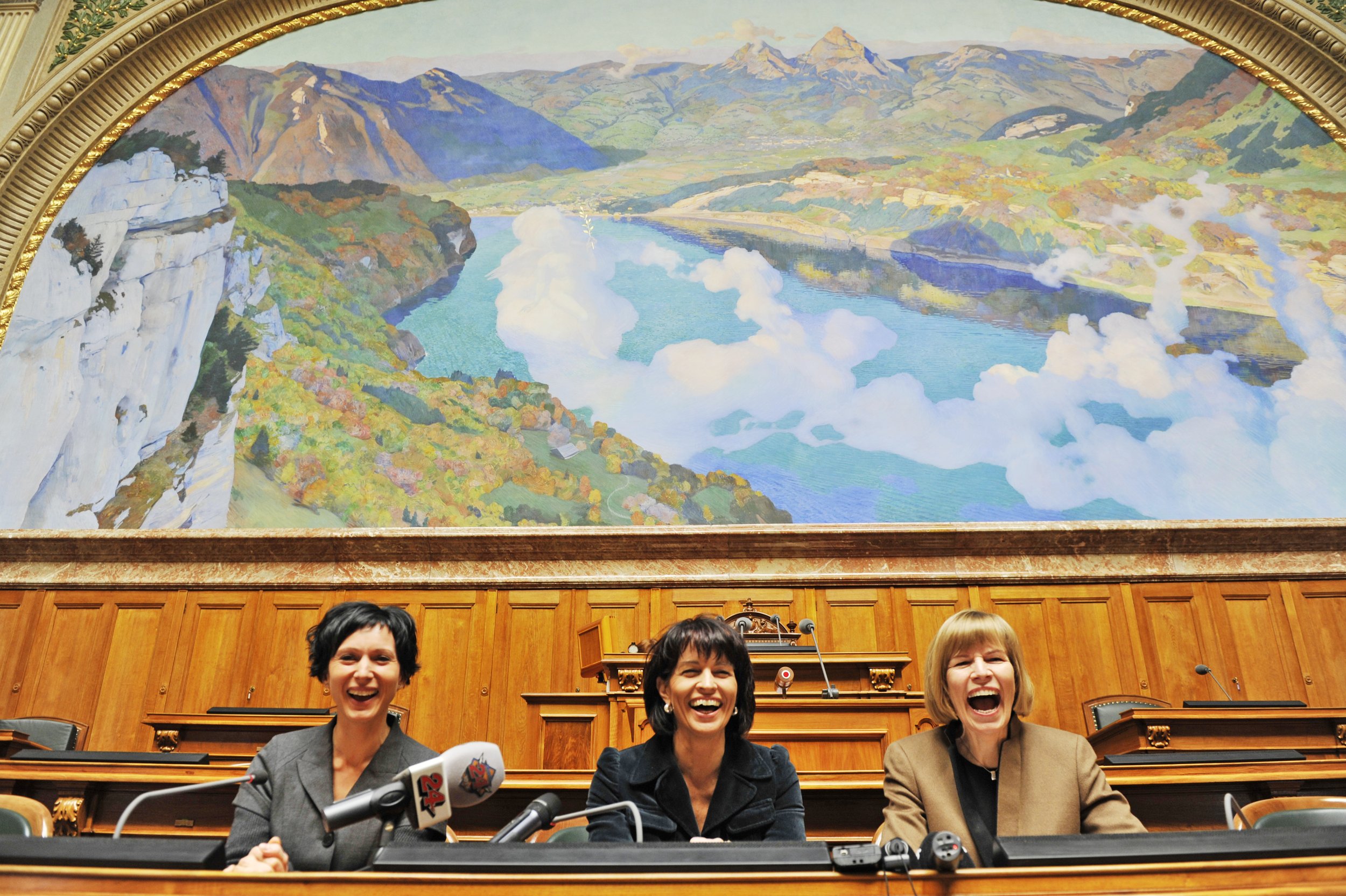
Après l’été - Roberto Badin | L'ANGLE | Hendaye
L'ANGLE | Hendaye
2. September 2023
Après l’été
Roberto Badin
Après l’été #4 © Roberto Badin
"Wenn man mit Blick auf das Meer aufgewachsen ist, verlässt einen das ozeanische Gefühl nie. Was mich am meisten beeindruckt hat, als ich mich an der baskischen Küste niederließ, waren das Licht und die Veränderungen der Atmosphäre, die sich in der Nebensaison noch stärker bemerkbar machen. Diese Zeit, in der sich die Region von ihren Saisonarbeitern leert und die Stimmung, wie in jeder Baderegion, heiterer und freundlicher wird. Die Emotionen, die dabei entstehen, sind so stark, dass ich das Bedürfnis verspürt habe, sie in Bildern festzuhalten. Ich ziehe die Banalität des Alltags der journalistischen Reportage einer aufgezwungenen Situation vor. Die surreale Atmosphäre der entleerten Städte während der ersten Eindämmung im Jahr 2020 erzeugte einen falschen Eindruck, der mich davon abhielt, weiter zu fotografieren. Das wäre ein anderer Ansatz gewesen, sogar ein anderes Thema. Also beschloss ich, zu warten, bis das Leben wieder seinen normalen Lauf nahm, damit das Projekt wieder auftauchen konnte. Im Gegensatz zu einer Reise, bei der wir mit unverbrauchten Augen an einem Ort ankommen, ist es eine Herausforderung, die Straßen um das eigene Haus herum zu durchstreifen. Wenn man täglich mit denselben Details und Stimmungen konfrontiert wird, könnte alles fast zu banal erscheinen, um den Blick auf sich zu ziehen. Genau diese Herausforderung hat mich gereizt; die Einfachheit der Dinge, die faszinierende Ästhetik des alltäglichen Gewöhnlichen. Meine Erkundung fand ausschließlich zu Fuß statt, über einen bestimmten Zeitraum hinweg, und ich bemerkte, dass ich nie einen Radius von 4 km* um mein Haus herum überschritten habe. Diese Strecke wurde zu einer Reise mit imaginären Grenzen, wobei ich bei meinen Spaziergängen der Intuition und dem Zufall freien Lauf ließ. Meine Absicht war es, einen Raum so zu zähmen, dass ich seine Identität herausfiltern konnte; eine Art Kartografie, bei der Licht und Emotionen meine einzigen Führer waren. Ohne es zu merken, polarisierte ich meine ewigen Inspirationsquellen: Architektur, Film und Literatur; ich denke insbesondere an das, was Georges Perec "das Infra-Alltägliche" nannte. Das Entdecken bestimmter Haltungen der Figuren innerhalb der Bilder wurde zu einem täglichen Vergnügen, wenn ich von jedem Aufnahmetag nach Hause kam.
APRÈS L'Été ist ein Projekt, dessen Ziel nicht darin besteht, die Leere zu zeigen, sondern vielmehr das, was sich um sie herum und in ihr befindet. Es geht darum, einen Ausschnitt der Realität zu beobachten, so wie ich sie sehe und empfinde, ohne den Ehrgeiz, eine andere Geschichte zu erzählen als die, die sich jeder beim Betrachten der Fotos machen kann. Was man wirklich sieht und was man mit der Zeit entdeckt, einfach durch genaueres Hinsehen".
« Quand on a grandi face à la mer, le sentiment océanique ne nous quitte jamais. Ce qui m’a le plus marqué lorsque je me suis installé sur la Côte Basque c’est la lumière et les changements d’atmosphère, qui se révèlent être encore plus forts hors saison. Ce moment où la région se vide de ses saisonniers et, comme pour toute région balnéaire, l’ambiance devient plus sereine et conviviale. L’émotion qui s’en dégage est tellement puissante que j’ai ressenti le besoin de la retranscrire en images. Je préfère la banalité du quotidien au reportage journalistique d’une situation imposée. L’ambiance surréaliste des villes vidées de leurs habitants lors du premier confinement en 2020 provoquait une fausse impression qui m’a empêché de continuer à photographier. Cela aurait été une autre approche, un autre sujet même. Alors, j’ai décidé d’attendre que la vie reprenne son cours normal pour que le projet puisse refaire surface. Contrairement à un voyage, où nous arrivons dans un endroit avec un regard vierge ; arpenter les rues autour de chez soi devient un défi. Se confronter quotidiennement aux mêmes détails et aux mêmes ambiances, tout pourrait paraître presque trop banal pour attirer le regard. C’est justement ce challenge qui m’a séduit ; la simplicité des choses, la fascinante esthétique de l’ordinaire de tous les jours. Mon exploration s’est faite uniquement à pied, pendant une période déterminée, et j’ai remarqué ne jamais dépasser un rayon de 4km* autour de chez moi. Ce parcours est devenu un voyage avec des frontières imaginaires, laissant libre cours aux intuitions et au hasard au fur et à mesure de mes promenades. Plutôt que l’exercice du témoignage, mon intention était d’apprivoiser un espace de façon à en extraire son identité; une sorte de cartographie dont la lumière et l’émotion ont été mes seuls guides. Sans m’en rendre compte, j’ai polarisé mes éternelles sources d’inspiration : l’architecture, le cinéma et la littérature ; je pense notamment à ce que Georges Perec appelait “l’infra-ordinaire”. Découvrir certaines attitudes des personnages à l’intérieur des images était devenu un plaisir quotidien en rentrant de chaque journée de prise de vues.
APRÈS L’ÉTÉ est un projet dont l’objectif n’est pas de montrer le vide, mais plutôt ce qu’il y a autour et à l’intérieur. Il s’agit d’observer un fragment de la réalité telle que je la vois et que je la ressens, sans l’ambition de raconter une autre histoire que celle que chacun peut se faire en regardant les photos. Ce qu’on voit réellement et qu’on découvre avec le temps, simplement, en observant de plus près. »
"Quando si cresce in riva al mare, la sensazione oceanica non ti abbandona mai. Ciò che mi ha colpito di più quando mi sono trasferita sulla Costa Basca è stata la luce e i cambiamenti di atmosfera, che sono ancora più marcati fuori stagione. Quel momento in cui la regione si svuota dei suoi lavoratori stagionali e, come in ogni regione di mare, l'atmosfera diventa più serena e amichevole. L'emozione che emerge è così forte che ho sentito il bisogno di catturarla in immagini. Preferisco la banalità della vita quotidiana al reportage giornalistico di una situazione imposta. L'atmosfera surreale delle città svuotate dei loro abitanti durante il primo confino nel 2020 ha creato una falsa impressione che mi ha impedito di continuare a fotografare. Sarebbe stato un approccio diverso, persino un soggetto diverso. Così ho deciso di aspettare che la vita tornasse alla normalità per far riemergere il progetto. A differenza di un viaggio, dove si arriva in un luogo con una tabula rasa, camminare per le strade intorno a casa diventa una sfida. Trovandosi quotidianamente di fronte agli stessi dettagli e alla stessa atmosfera, tutto può sembrare quasi troppo banale per catturare l'attenzione. È proprio questa sfida che mi ha attratto: la semplicità delle cose, l'estetica affascinante dell'ordinario quotidiano. La mia esplorazione si è svolta esclusivamente a piedi, in un periodo di tempo prestabilito, e ho notato che non andavo mai oltre un raggio di 4 km* intorno a casa mia. Questo percorso è diventato un viaggio dai confini immaginari, dando libero sfogo all'intuizione e al caso. Più che un esercizio di testimonianza, la mia intenzione era quella di addomesticare uno spazio in modo da estrarne l'identità; una sorta di cartografia in cui la luce e l'emozione erano le mie uniche guide. Senza rendermene conto, ho polarizzato le mie eterne fonti di ispirazione: l'architettura, il cinema e la letteratura; penso in particolare a ciò che Georges Perec chiamava "l'infra-ordinario". Scoprire certi atteggiamenti dei personaggi all'interno delle immagini è diventato un piacere quotidiano al ritorno da ogni giornata di riprese.
APRÈS L'ÉTÉ è un progetto il cui obiettivo non è mostrare il vuoto, ma piuttosto ciò che c'è intorno e dentro di esso. Si tratta di osservare un frammento di realtà così come lo vedo e lo sento, senza l'ambizione di raccontare una storia diversa da quella che ognuno può inventarsi guardando le foto. Ciò che realmente vediamo e scopriamo nel tempo, semplicemente osservando più da vicino.
"When you grow up by the sea, the oceanic feeling never leaves you. What struck me most when I moved to the Basque Coast was the light and the changes in atmosphere, which are even more pronounced out of season. That moment when the region is emptied of its seasonal workers and, as with any seaside region, the atmosphere becomes more serene and friendly. The emotion that emerges is so powerful that I felt the need to capture it in images. I prefer the banality of everyday life to journalistic reporting of an imposed situation. The surreal atmosphere of the towns emptied of their inhabitants during the first confinement in 2020 created a false impression that prevented me from continuing to photograph. It would have been a different approach, a different subject even. So I decided to wait for life to return to normal so that the project could resurface. Unlike travelling, where you arrive in a new place with a fresh pair of eyes, walking the streets around your home becomes a challenge. Confronted daily with the same details and the same atmosphere, everything could seem almost too banal to catch the eye. It's precisely this challenge that appealed to me: the simplicity of things, the fascinating aesthetics of the ordinary everyday. My exploration took place solely on foot, over a set period of time, and I noticed that I never went beyond a 4km* radius around my home. This route became a journey with imaginary boundaries, giving free rein to intuition and chance as I went along. Rather than the exercise of bearing witness, my intention was to tame a space in such a way as to extract its identity; a kind of cartography in which light and emotion were my only guides. Without realising it, I polarised my eternal sources of inspiration: architecture, cinema and literature; I'm thinking in particular of what Georges Perec called 'the infra-ordinary'. Discovering certain attitudes of the characters inside the images became a daily pleasure on returning from each day's shooting.
AFTER SUMMER is a project whose aim is not to show emptiness, but rather what is around and inside. It's about observing a fragment of reality as I see it and feel it, without the ambition of telling a story other than the one that everyone can tell themselves by looking at the photos. What we really see and discover over time, simply by taking a closer look.
"Cuando creces junto al mar, la sensación oceánica nunca te abandona. Lo que más me impresionó cuando me trasladé a la Costa Vasca fue la luz y los cambios de atmósfera, que son aún más pronunciados fuera de temporada. Ese momento en que la región se vacía de sus temporeros y, como en cualquier región costera, el ambiente se vuelve más sereno y acogedor. La emoción que emerge es tan poderosa que sentí la necesidad de plasmarla en imágenes. Prefiero la banalidad de la vida cotidiana al reportaje periodístico de una situación impuesta. La atmósfera surrealista de las ciudades vaciadas de sus habitantes durante el primer confinamiento en 2020 creó una falsa impresión que me impidió seguir fotografiando. Habría sido otro enfoque, otro tema incluso. Así que decidí esperar a que la vida volviera a la normalidad para que el proyecto pudiera resurgir. A diferencia de los viajes, en los que llegamos a un lugar con la mente en blanco, pasear por las calles de tu casa se convierte en todo un reto. Enfrentado a diario con los mismos detalles y el mismo ambiente, todo puede parecer demasiado banal para llamar la atención. Es precisamente este reto lo que me atraía: la sencillez de las cosas, la fascinante estética de lo cotidiano. Mi exploración se realizó únicamente a pie, durante un periodo de tiempo determinado, y me di cuenta de que nunca iba más allá de un radio de 4 km* alrededor de mi casa. Esta ruta se convirtió en un viaje con límites imaginarios, dando rienda suelta a la intuición y al azar a medida que avanzaba. Más que el ejercicio de testimoniar, mi intención era domesticar un espacio para extraer su identidad; una especie de cartografía en la que la luz y la emoción eran mis únicas guías. Sin darme cuenta, polaricé mis eternas fuentes de inspiración: la arquitectura, el cine y la literatura; pienso en particular en lo que Georges Perec llamaba "lo infraordinario". Descubrir ciertas actitudes de los personajes dentro de las imágenes se convirtió en un placer diario al volver de cada jornada de rodaje.
AFTER SUMMER es un proyecto cuyo objetivo no es mostrar el vacío, sino lo que hay alrededor y dentro. Se trata de observar un fragmento de la realidad tal y como yo la veo y la siento, sin la ambición de contar una historia distinta de la que cada uno puede contarse mirando las fotos. Lo que realmente vemos y descubrimos con el tiempo, simplemente mirando más de cerca.
(Text: Roberto Badin)

























































